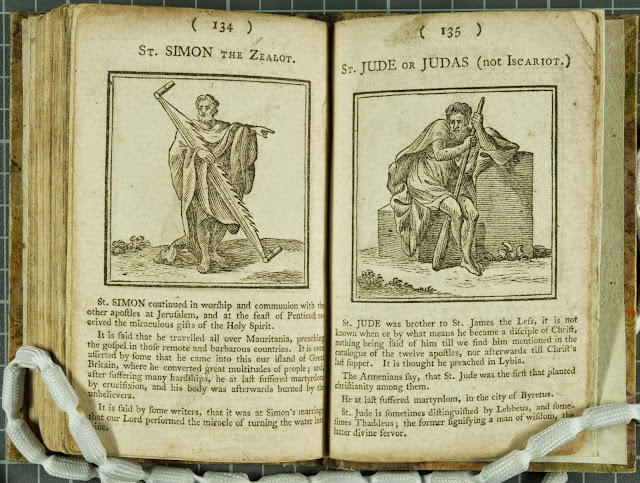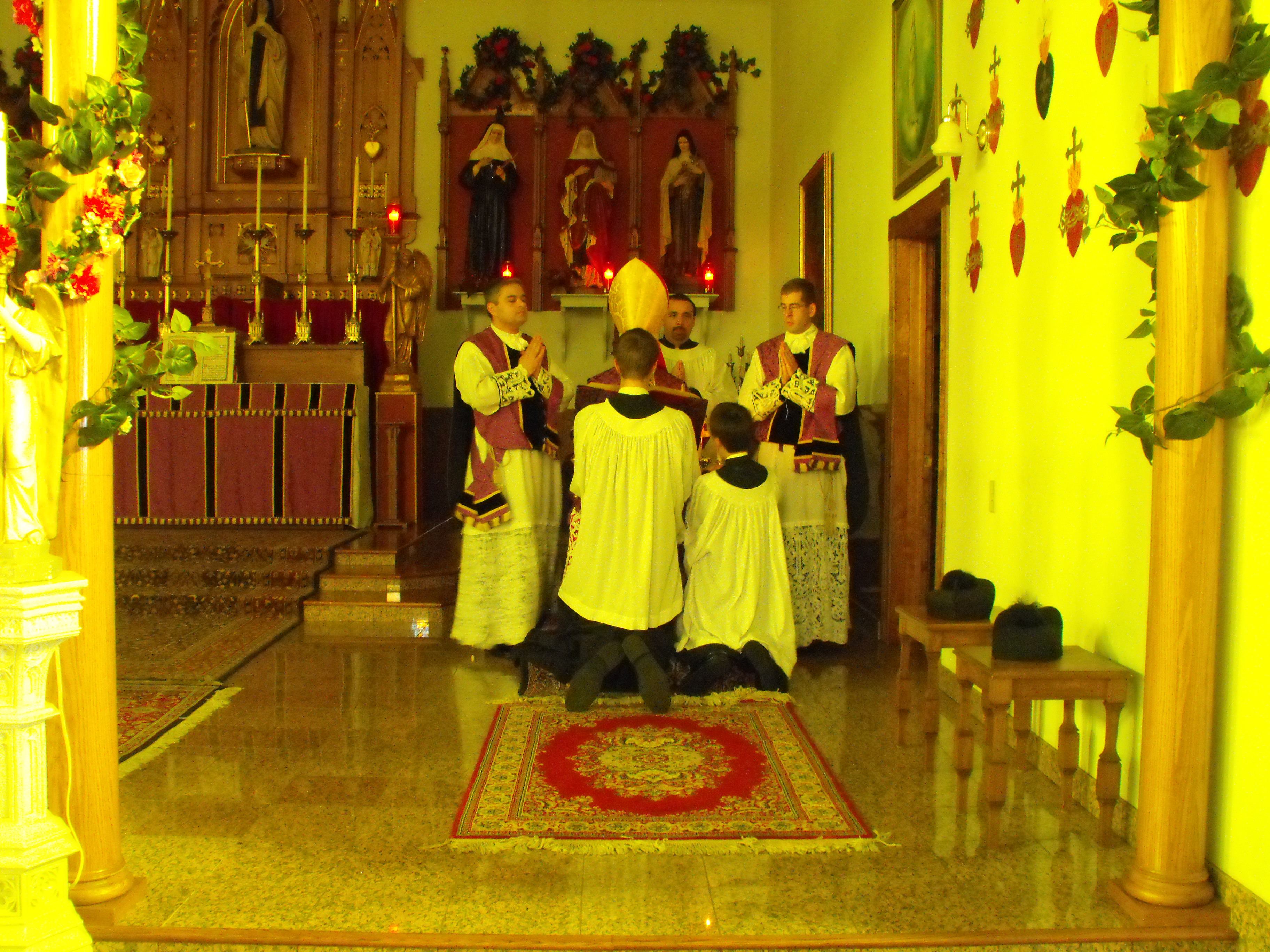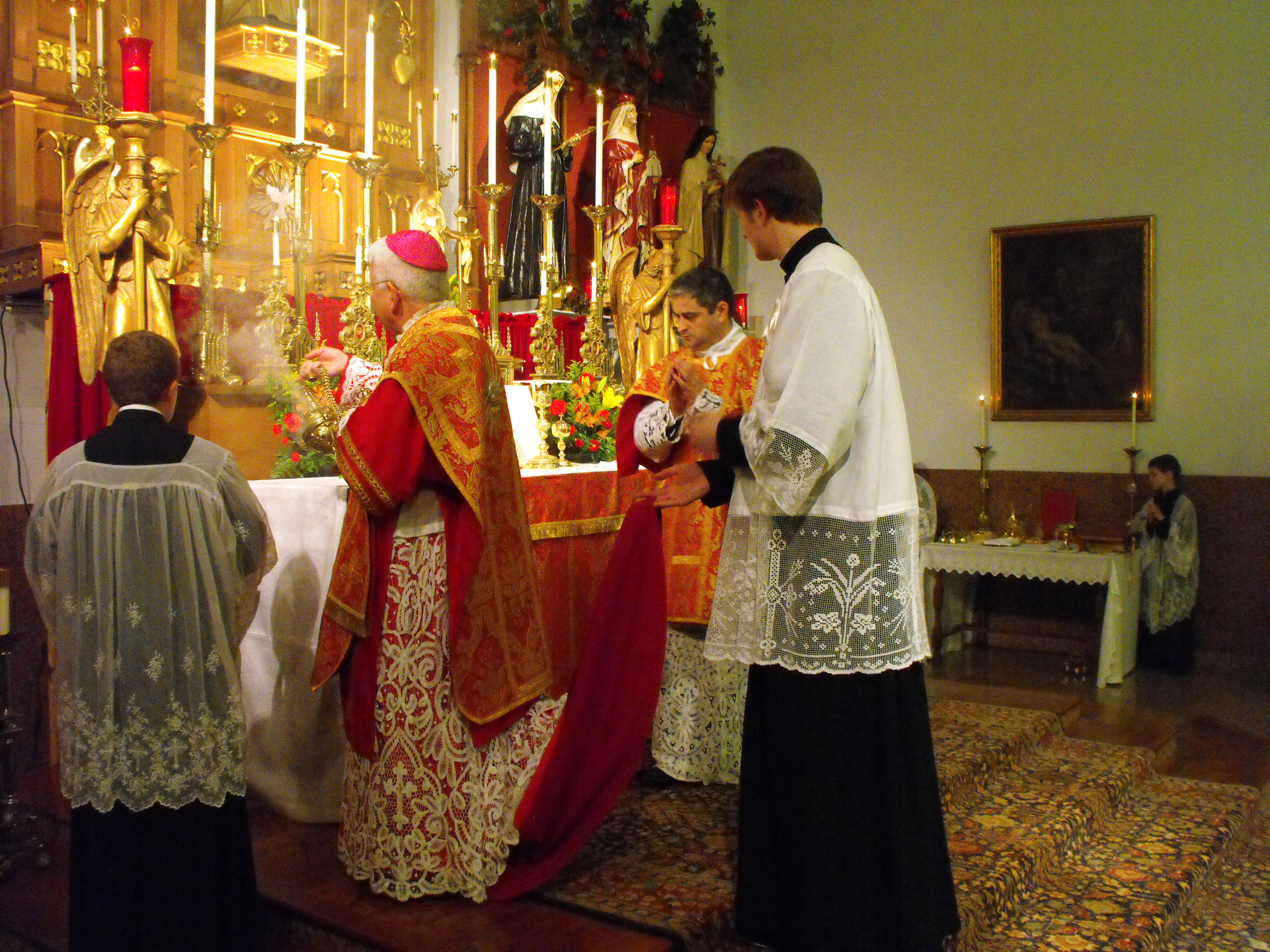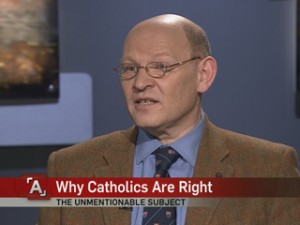“You have very often heard, holy brethren, and you know well, that John the Baptist, in proportion as he was greater than those born of women, and was more humble in his acknowledgment of the Lord, obtained the grace of being the friend of the Bridegroom; zealous for the Bridegroom, not for himself; not seeking his own honor, but that of his Judge, whom as a herald he preceded.” –St. Augustine
“From Holy Scripture we also learn that some souls through the divine predilection, as those of Jeremias and of the Baptist, were sanctified before they saw the light of day. Now, what shall we say of Joseph? The Church has never made any utterance on the subject. Still, Joseph surpasses all the other saints in dignity and sanctity.” –Edward Healy Thompson
~
Devotion to St. John the Forerunner began very early in the Church. In the West his Nativity and Beheading are both celebrated with major feasts, and in the East he has six feasts throughout the year. There were no fewer than fifteen churches dedicated to him in Constantinople alone. His relics were and are matters of great contention, some of which were desecrated by Julian the Apostate (331-363) because he knew this would greatly offend Christian sensibilities. The Feast of the Baptist’s Nativity is believed to be one of the oldest feasts commemorating a saint ever introduced to the calendar.
What a great contrast to the devotion to St. Joseph, which was almost unknown for a thousand years of the Church’s liturgical life. Unlike the Josephite devotion, which was artificially imposed from above at various times and never organically expanded among the faithful, devotion to the Baptist started strong and only increased until modern times. How strange that the exalted place of Our Lord’s Forerunner should be so suddenly supplanted in the hearts of Latin Catholics.
 |
| (St. Francis de Sales Oratory; St. Louis, Missouri) |
 |
| (St. Joseph’s Catholic Church; Wapakoneta, Ohio) |
John the Baptist we know with a high level of certainty to have been sanctified by the Holy Ghost in the womb of St. Elizabeth, and thus freed from concupiscence for the rest of his life. In this glory he is a peer of St. Jeremias the Prophet, and the lesser of Our Lady who was freed from sin from the first moment of conception. As St. Gabriel prophesied to Zachary, “he will be filled with the Holy Ghost, even from his mother’s womb” (Luke 1). Because of this he is generally considered to be the third holiest of all men.
In art, John is most often depicted in his beheading or during his ministry as the Forerunner. Frequently he is baptizing Christ or pointing Him out to his own disciples.
 |
| (Annibale Carracci) |
But there is another subgenre of sacred art in which the Baptist is notably present. The icons of
Christ Pantocrator or Christ in Majesty would sometimes include a full or partial court of angels of saints. An early 4th century example is the “Christ the Lawgiver” mosaic in the Basilica of San Lorenzo, Milan, where He is surrounded by the Twelve Apostles.
Another frequent variation depicts Christ surrounded by the four Cherubim who symbolize the four Gospels. This imagery comes almost verbatim from St. John the Apostle’s Apocalypse: “In the midst of the throne, and round about the throne, were four living creatures, full of eyes before and behind. And the first living creature was like a lion: and the second living creature like a calf: and the third living creature, having the face, as it were, of a man: and the fourth living creature was like an eagle flying” (Apoc. 4).
 |
| (Psalter of Westminster Abbey; 13th cent.) |
Most relevant to our subject is the
Deësis (“supplication”) variation, which shows Christ flanked on either side by the Blessed Virgin and John the Forerunner, both with heads bowed in prayer to the enthroned King. In the East, the
Deësis is sometimes presented in the context of the heavenly court, although often with just the three figures.
 |
| (St. Sophia of Kyiv; 11th cent.) |
 |
| (Walters Art Museum; 16th cent.) |
In the West, the
Deësis more frequently lent itself to depictions of the Last Judgment, where Mary and John are beseeching the Judge for mercy. These two saints were believed to be the greatest intercessors for clemency; hence, John is always invoked in the traditional
Confiteor. (In some French cathedrals, Mary was paired with St. John the Apostle, just as they were together at the foot of the Cross.)
 |
| (Marx Reichlich; 16th cent.) |
 |
| (Stefan Lochner; 15th cent.) |
 |
| (Santa Maria d’Arties; 16th cent.) |
There the Forerunner remained for many centuries, head bowed and knee bent before the awesome judgment seat of Christ, beseeching Him for mercy on behalf of all the faithful. But one is unlikely to find John there anymore. Instead, one is rather likely to find this sort of artistic monstrosity:
What could prompt Catholic sensibilities to supplant the Forerunner with the Stepfather of Our Lord? Do we wish to see St. Joseph as a kind of forerunner of the Forerunner, a precursor to the Precursor? Why do we prefer Joseph to John? I harbor a suspicion that it is because John is too ascetic for our tastes.
Joseph was a man who led a fairly average life, after all the drama of fleeing to Egypt and back. He is relatable: a man who worked for a living, an ordinary “family man” to whom extraordinary things happened—a sort of ancient, Jewish Bilbo Baggins. John, on the other hand, is too strange and extremist for
bourgeois Catholic sensibilities. At one time, the
sensus fidelium placed the Baptist as the complement of the Virgin, but that rough fur coat does not translate well to modern, pink-cheeked plaster statuary.

The modern Latin Catholic appeals to the Holy Family to restore the dignity of family life and to solidify the home with strong bonds of love, but the angel prophesied rather that it would be John who would “turn the hearts of the fathers unto the children” (Lk. 1). Remember that John died for the sanctity of marriage, opposing divorce and adultery with his dying breath. He even won the respect of the wicked Herod: “For Herod feared John, knowing him to be a just and holy man: and kept him, and when he heard him, did many things: and he heard him willingly” (Mark 6). Sometimes the wicked respect those who stand against them on principle, and are open to being convinced of their errors. Herodias had John executed because she feared Herod would be convinced to divorce her. Those who have gained worldly power through licentiousness have the most to fear from moral truth.
Perhaps it is this rough, eremitic extremism that will paradoxically revive love in the family. Those who forcefully oppose the family’s disintegration are the ones who love it the most, whether they are married or not.
 |
| St. Joseph, not such a bad guy after all, pray for us! |













































